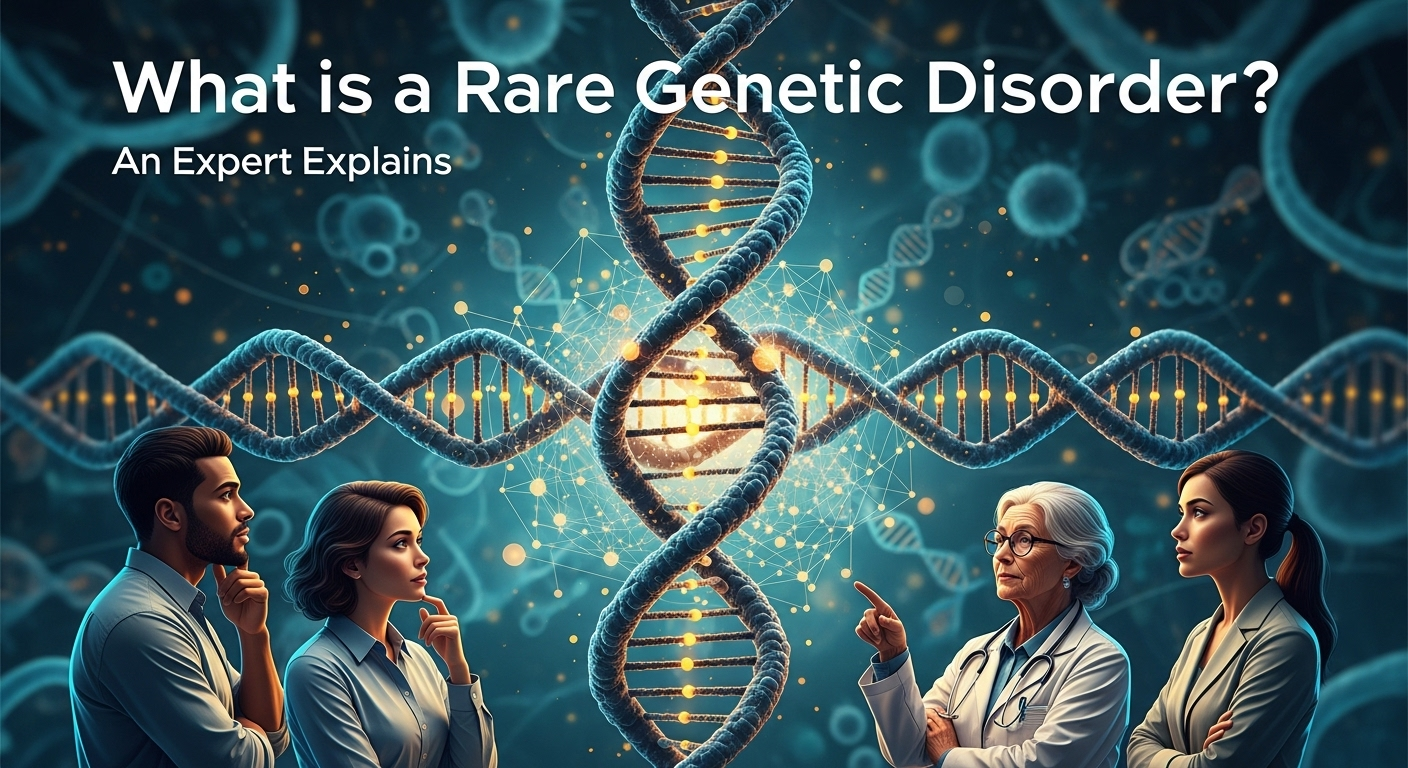In a world where medicine often focuses on common ailments like the flu or high blood pressure, there exists a vast, complex, and often overlooked universe of health conditions. These conditions affect millions of people worldwide, yet many have never heard of them. They are the "rare diseases," a category where the journey to a diagnosis can be long and arduous, and the path to treatment is frequently uncharted. The fundamental question for patients, families, and even many healthcare providers is, what is considered a rare genetic disorder? This question opens the door to understanding a significant and challenging area of human health, defined not just by its infrequency but by the unique genetic blueprints that cause it. This expert guide will demystify the world of rare genetic disorders, from their official definitions to the profound impact they have on human lives. Defining "Rare": A Matter of Numbers and Geography The term "rare" can feel subjective, but in the medical and regulatory world, it has a precise definition. These definitions are crucial because they unlock pathways for research funding, drug development, and patient support. However, the exact number that qualifies a disease as rare varies by country or region, creating a slightly different landscape depending on where you live. This numerical threshold is the first step in understanding the scope of these conditions. In the United States, the Orphan Drug Act of 1983 provides the benchmark. A disease is considered rare if it affects fewer than 200,000 people in the U.S. population. This legislation was a landmark achievement, creating financial incentives (like grants, tax credits, and market exclusivity) for pharmaceutical companies to develop "orphan drugs"—treatments for these small patient populations that might otherwise be ignored due to a lack of commercial profitability. Meanwhile, the European Union has a different, prevalence-based definition. A disease is defined as rare when it affects no more than 1 in 2,000 people. While the numbers seem different, both definitions serve the same purpose: to identify conditions that require special attention and resources. The paradox of rare diseases is that while each one is individually uncommon, collectively, they are not. It's estimated that there are over 7,000 identified rare diseases, and together they affect an estimated 300 million people worldwide. This means that nearly 1 in 10 people in some countries may be living with a rare disorder. The Genetic Foundation: When the Blueprint Has a Flaw The vast majority—about 80%—of rare diseases are genetic in origin. This means they are caused by an anomaly or "mutation" in an individual's DNA. Our DNA contains thousands of genes, each acting as a specific instruction for building and maintaining our bodies. When a gene is altered, the instruction it provides can become faulty, leading to a protein that doesn't work correctly or isn't produced at all. This single error can have cascading effects throughout the body, resulting in a genetic disorder. Understanding the genetic basis is key to diagnosis, family planning, and the development of future therapies. These disorders are not caused by lifestyle choices or environmental factors alone; they are written into a person's biological code from conception. The nature of the genetic change and how it is passed through families determines the type and characteristics of the disorder. 1. The Different Types of Genetic Mutations Genetic disorders arise from different kinds of errors in our DNA. Scientists categorize them into three main groups, which helps in diagnosing the condition and understanding its potential severity. Each type of mutation affects the genetic code in a unique way. Single-Gene Disorders: As the name suggests, these disorders are caused by a mutation in a single gene. They are often the most "straightforward" to trace through families because they follow predictable inheritance patterns. Think of a gene as a single recipe in a massive cookbook. If one critical recipe has a typo, the resulting dish (a protein) will be flawed. Examples of single-gene disorders include Cystic Fibrosis, Huntington's Disease, and Sickle Cell Anemia. Chromosomal Disorders: These occur when there is a change in the structure or number of chromosomes. Chromosomes are the structures that hold our genes, like volumes in a library. A chromosomal disorder can involve a missing chromosome, an extra chromosome (like in Down Syndrome, which is caused by an extra copy of chromosome 21), or large-scale deletions or rearrangements of a chromosome segment. These changes affect hundreds or even thousands of genes simultaneously, often leading to a wide range of developmental and health issues. Complex or Multifactorial Disorders: These are the most complicated. They result from a combination of mutations in multiple genes interacting with environmental factors and lifestyle choices. While a person may be genetically predisposed to a condition, it might not manifest without certain environmental triggers. Many common chronic diseases like heart disease and diabetes are multifactorial, but so are some rare conditions. This complexity makes them much harder to diagnose and predict. 2. Understanding Inheritance Patterns How a genetic disorder is passed from one generation to the next is described by its inheritance pattern. This is a critical piece of information for families, as it helps determine the risk of future children being affected. Genetic counselors specialize in explaining these complex patterns. Autosomal Recessive: For a person to have a disorder with this inheritance pattern, they must inherit two copies of the mutated gene—one from each parent. The parents are typically "carriers," meaning they have one copy of the mutation but do not show symptoms of the disorder. With each pregnancy, there is a 25% chance the child will have the disorder, a 50% chance they will be a carrier like the parents, and a 25% chance they will inherit two normal genes. Cystic Fibrosis is a classic example. Autosomal Dominant: In this case, only one copy of the mutated gene is needed to cause the disorder. A person with the condition has a 50% chance of passing the mutated gene (and thus the disorder) to each child. The gene is "dominant" over




